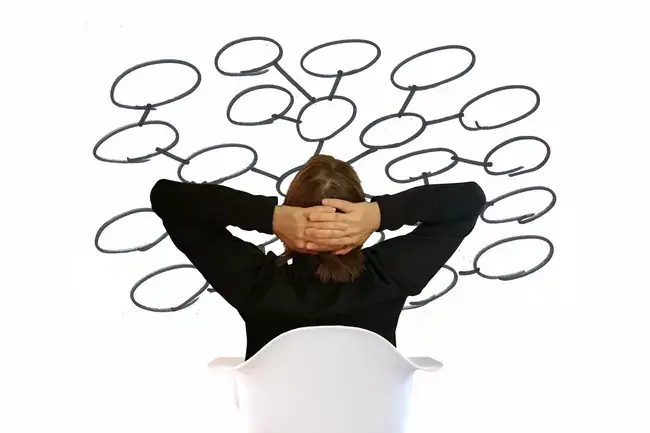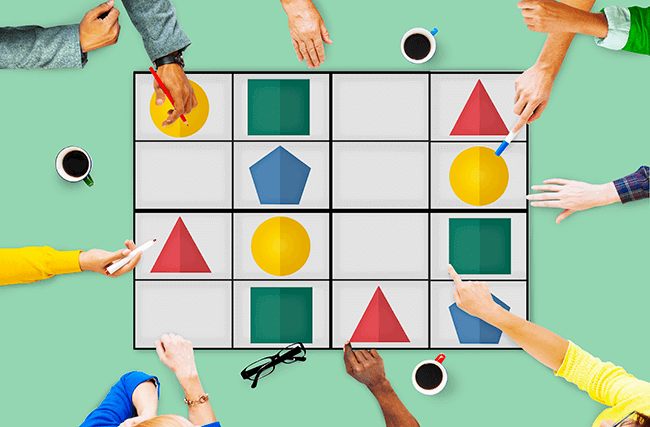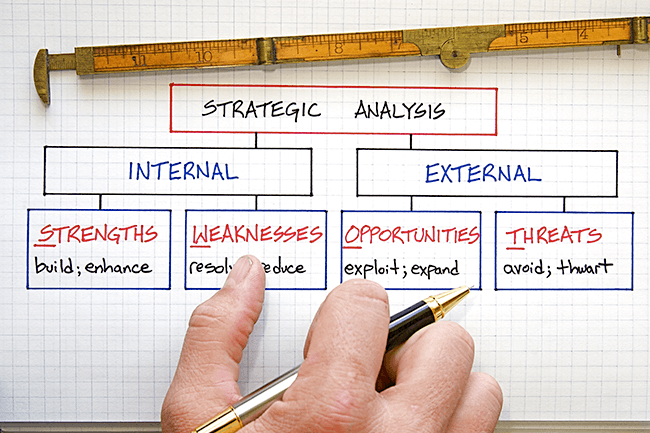The Importance of Having a Customer Journey Map: A Closer Look

Imagine spending hours on your marketing materials only to get no customers. Before you waste more time, consider if you have a customer journey map.
If not, you should create one to help guide your business in the right direction. Then, you can keep from making massive mistakes that could cost you sales and customers.
Read on to learn more.
Overview of a Customer Journey
To create a customer journey map, you should consider what a customer journey looks like. The specific journey can depend on the type of business you have and what customers you serve.
For example, a retail store may have a step in the customer journey that involves visiting the store. Meanwhile, that same step for an eCommerce business would be to buy something from the company website.
Regardless of the specific journey, there will be a few overall steps. First, the customer journey will start with a customer learning that they need something you offer.
After a bit of research, they will decide to buy your product or book your service. Of course, that will lead to the customer using the thing they bought.
They may encounter some issues, so this stage might involve customer service to help resolve any problems. Assuming things go well, you can end the customer journey with a repeat purchase.
Why You Need a Customer Journey Map
Even if you know the basics of a customer journey map, it helps to draw one out. This can help you and your team stay on the same page when working with customers.
You can go as in-depth into the customer journey as you choose, or you can start with a basic outline. Either way, you need to develop a customer map and give a copy to each employee.
Consider how a customer journey map can help you and your team build your business and help customers.
Outline Buyer Personas
Before you create a customer journey map, you should outline a buyer persona or two. Think about your ideal customers, their income, interests, age, and where they live.
If you sell to multiple types of people, you can create a buyer persona for each. The buyer persona will then help you outline the customer journey because it can help you determine what problems your customer has.
Then, you’ll be able to cover the various parts of the journey for different products or services you sell. And you can focus on the types of clients and customers you want to have.
Develop a Marketing Strategy
Another reason having a customer journey map is important is that it can help you plan your marketing strategically. You can create content that appeals to various steps in the customer journey.
For example, you might create informational content that builds brand awareness. Along with that, you can post content that educates followers about your product or service.
You’ll also be able to figure out how and when you want to connect with clients. The touchpoints you use may include social media, email marketing, or your website.
Create a Sales Funnel
As you develop your marketing strategy, you can also use your customer map to create a sales funnel. Sales funnels and customer journeys go hand in hand, so you can sell to someone at each stage.
Getting people into your funnel can also help keep your business on their minds. Even if someone isn’t at the purchase stage yet, they can learn about your business as they contemplate their purchase.
Once they’re ready, they’ll already be in your sales funnel. It will be easy for the customer to buy something from you, so you can make the sales process less stressful for customers and employees.
Gain New Perspectives
Having a customer journey map also helps you gain perspectives of different people. Of course, you can do some research on your customers to figure out their perspective on your business.
You may also want to talk to employees or stakeholders to get their ideas on the customer journey. If you already have a map, you can show it to employees and stakeholders to help them understand the business.
If you’re working on a new customer map, employees and stakeholders can help you design it. Then, you’ll be able to come up with a journey that better reflects your ideal customers.
Understand Customers Better
As you learn more about customers and understand their perspectives, you can understand them. You can learn why they do what they do and when they do it.
Knowing that can help you figure out how and when to market a specific product you sell. Without a customer map, it can be easy to make assumptions about what a customer might do.
However, those assumptions may cause you to lose out on sales. You might even alienate potential leads if you say or do something that offends them.
A customer journey map can help you stay on track and avoid losing customers and sales.
Learn About Pain Points
As you research your customers to develop a journey map, you can learn about their pain points. Specifically, you can figure out what problems you’re able to solve.
Knowing this helps when you’re trying to decide what new product or service to launch. However, it can also inform your brand messaging and other elements of your marketing strategy.
You’ll be able to learn what makes people buy something and what might keep someone from buying from you. Then, you can adapt your strategies to help get more sales and conversions.
Fill in Gaps
Without a customer journey map, it can be easy to have a lot of gaps in the sales funnel. For example, you might not be able to stick with a customer when they switch from using their phone to their computer.
Another common gap is between your marketing channels, such as if you don’t connect your website and social media accounts. And you might also face gaps between teams and departments in your company.
Having a customer journey map can help reduce or eliminate these gaps. That way, your entire team can help customers to the best of their ability, regardless of their role or where they work.
Improve the Experience
When you fill in gaps and can solve problems, you can improve the customer experience. You’ll be able to standardize different activities for each step in the customer journey.
All employees will be able to follow the same process when helping customers or getting sales. Having that consistency can offer a better experience to all of your customers.
If different employees are providing different experiences, that can get confusing. Some customers may love your company, while others will hate it.
You can hold your employees accountable by sticking to a customer journey map. Then, you can keep employees from treating customers differently.
Create Better Goals
Having a customer journey map can also help you create better goals for the company and specific departments. You can put the customer journey at the focus of everything you do.
Then, you’ll be able to set goals that help get and retain customers. Of course, you should still set good goals, such as the SMART goal method.
Regardless of how you set goals, be sure to use your customer map for inspiration. Then, you can make sure to always focus on the people who pay for your products and services and keep your business going.
Be Proactive
After you develop a customer journey, refer back to it regularly. Then, you can compare the map to how the journey is going in real life, and you may find things that do or don’t work.
When developing your customer journey, you may think something will work well. However, it might not be as successful in practice, so you can adjust the journey.
Then, you can figure out what does work for your customers to make it better. For example, you might get a lot of questions on the same issue, so you know to fix that when launching a new version of the product.
Train Employees
You can also use your customer journey map to train employees, especially in the sales department. Employees will learn the steps a customer goes through when purchasing from you.
That can help sales representatives understand the customer and the problems they have. They can empathize with people and figure out what they need that your company can offer.
Whether you conduct training meetings online or in person, you can teach people how to sell better. And you can give employees a copy of the journey map to refer to when they’re making a sales call.
Build Customer Loyalty
The end stage of a good customer journey map is making a repeat purchase. As you design your customer map, think about what will convince someone to buy from you again.
For example, maybe you offer great customer service, or you offer a special bonus to first-time customers. You can do this in a lot of ways, and your customer journey can influence what you do to build loyalty.
Of course, you can always attract new customers, but that’s often harder and more difficult than retaining customers. If you get all of your current customers to place another order, you can increase your sales and revenue significantly.
Encourage Word of Mouth
If you have a good customer journey and can execute it, your customers may want to share your business with others. Referrals can be an excellent way to get more customers quickly.
By providing an enjoyable purchasing experience, you won’t have to work hard for referrals. You might not even have to ask people to share your business if they already want to tell others about it.
Word-of-mouth is a free and powerful tool, and you can make it work without a customer journey. However, having a map can help you help current customers so that they want to spread the word about what you do.
Provide Good Customer Service
When you have a good customer journey map, you can use it to inform your customer service. You can predict when people will contact you for help in their buying journey.
For example, you might get a lot of pre-sales inquiries about your offer. In that case, you can come up with documentation to help your customer service team answer those questions and get people to buy.
Or perhaps you have a lot of customer calls after they buy the product. If so, you can train your employees on how to handle certain questions or complaints to keep customers happy.
It’s possible to provide good customer service without a customer map, and you should do so. However, it’s one more benefit of mapping out the journey your buyers go through.
Estimate Sales and Revenue
Once you start tracking the success of your customer map, you may be able to predict future sales. Sales forecasting may help you get loans and other funding if you need to grow your business.
Even if you don’t show the forecasts to outside people, it can help you plan for the future. You may be able to hire new people if you know you can expect more sales in the coming months.
As long as you focus on the customer journey and stick to strategies that work, your predictions may come true. Then, you’ll be able to continue to scale your business to be more successful.
While you can predict future sales without a customer map, it could be more difficult. Or you might find that you can’t predict sales at all since you don’t know what’s helping you get sales.
Will You Use a Customer Journey Map?
A customer journey map outlines the steps a customer takes before and after buying from you. But when done well, the map can help you run a thriving business.
That way, you can train employees and make sure everyone provides a consistent experience to customers. Soon enough, you may be able to reach all of your goals.
Do you want to design a customer journey map with your team? Learn more about how HuddleIQ can help.
Trusted by




























